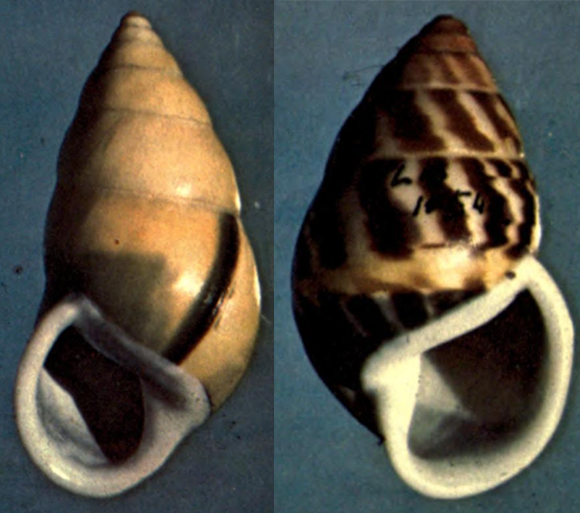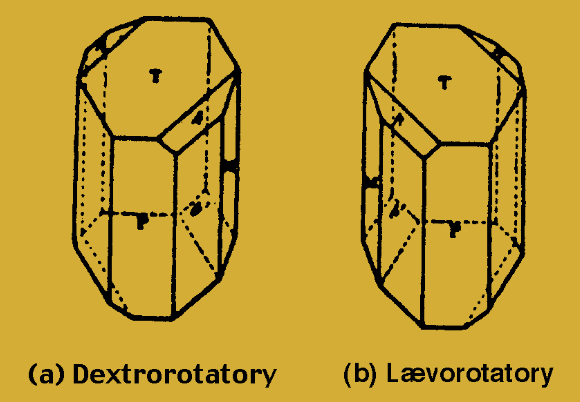It turns out that the difference between right and left didn’t start with politics: it also exists in nature and affects a long list of phenomena, from the scent of lemons to the efficacy of medicines. How did this difference come about in the first place?
The question “Why are there leftists in the world?” seems to have been taken from the last of the commenters, and may not immediately appear relevant to a scientific article. Without delving into political ideologies, the literal–historical answer to this question can be traced back to France’s Assemblée Nationale - the parliament established following the French Revolution. The more conservative factions sat to the right of the Chairman, while the radical–liberal factions sat on his left. This is where the terms “leftists” and “rightists” originated in the political sense.

It all began with seating arrangements. France’s Assemblée Nationale, February 1790 | Source: Wikimedia Commons
Scientists may raise the question “What does it mean to sit on the right or left and what defines the right and left sides? Are there physical differences between the two sides? When we look in a mirror, we notice that our right and left sides are reversed. For example, the watch on our left hand appears on our reflection’s right hand since our right hand in the mirror is actually the mirror image of our left hand. It is important to note that although our two hands are mirror images of each other, they do not overlap perfectly. It’s impossible to position one hand on top of the other in a way that all parts of both hands point in the same direction. Also, our right hand cannot shake hands with our left hand. This raises an intriguing question - would a world that is a mirror image of our world be precisely identical to our own?
If you had to explain to someone who is completely unfamiliar with the concepts of right and left, how to locate these sides of their body - without the two of you being able to see each other - what would you do? If you think a bit about this question you’ll find that this task is extremely challenging, and perhaps even impossible. As we delve into this topic, by the end of the article we’ll discover the insights that science has reached over the years in relation to this fascinating question.
Left hand, Right hand
When we look at our bodies, we can see that although we are externally symmetrical (in other words, the right side appears identical to the left side) there is an apparent imbalance between right and left. About 90% of humans are right-handed, meaning that they primarily use their right hand for daily tasks. This is why tools for which sidedness is important, such as scissors or can openers, are designed for right-handed individuals.

Can openers, like scissors, are designed for right-handed people, not left-handed people | Photo: Shutterstock
The relative rarity of left-handedness among humans has led to a slew of negative phrases and expressions associated with left-handedness, apparently stemming from xenophobia. Examples are the Hebrew phrase ‘two left hands’ and the English word ‘sinister’—which means ‘evil’ or ‘malicious’ and originated from the Latin word for ‘left-handed’. The hostility towards left-handed individuals was particularly evident in the attempts to convert or re-educate them, which persisted until recently. For instance, my mother, who is left-handed and grew up in the Soviet Union, had her left arm tied to the back of a chair to prevent her from using her left hand to hold a pencil while learning how to write in the first grade. Such practices were widespread in the past.
In the distant past, particularly during Biblical times, left-handedness was actually considered an advantage. This can be inferred from the fact that left-handed individuals are mentioned alongside with other unique weapon-wielders in the Bible. For example, in the book of Judges, chapter 20 (verses 15-16), it is written: “And the children of Benjamin numbered on that day out of the cities twenty and six thousand men that drew sword, besides the inhabitants of Giv’ah, who numbered seven hundred chosen men. From all these people these seven hundred chosen men were left-handed; each one could sling stones at a hair-breadth, and not miss.” Note that 700 left-handed fighters out of 26,000 corresponds to only 2.7% of left-handed people, which is less than their proportion nowadays.
Shifting back to politics for a moment, it is noteworthy that seven out of the last 15 presidents of the United States were left-handed: Herbert Hoover, Harry Truman, Gerald Ford, Ronald Reagan, George H.W. Bush, Bill Clinton, and Barack Obama - significantly higher than the proportion of left-handed individuals in the general population. Many other presidential candidates, including John Kerry and John McCain, were also left-handed. Can we therefore conclude that left-handed people have a greater inclination towards attaining leadership positions? - of course not. The sample size is too small and it’s difficult to extrapolate this analysis to the past, since all the US presidents from the 19th and early 20th centuries lived in a time when it was common practice to coerce left-handed individuals to write with their right hand (as was done with my mother). Hence, it is difficult to determine their true dominant hand

A surprising proportion of left-handed presidents from both parties: clockwise from top right: Reagan, Bush Senior, Clinton and Obama | Photos: Wikipedia
Left Brain, Right Brain
With respect to the brain—it is divided into two hemispheres, each controlling the opposite side of the body. Therefore, in most individuals, the left hemisphere dominates, resulting in right-handedness. In general, functions are distributed equally between the two hemispheres, but it turns out that this is not the case with respect to speech processing. In 95% of right-handed people, speech processing takes place in the left hemisphere, which also controls the dominant hand. Thus, people who suffer a stroke on the left side of the brain may become paralyzed on the right side of the body and have difficulties with speech and language comprehension. In other words, a left hemisphere stroke leads to the fulfillment of both promises made by a bridegroom at a Jewish wedding: “my right hand will forget” and “my tongue will cleave to the roof of my mouth”.
All of the above prompts the question: Why? If the body is symmetrical and the two sides of the brain are mirror images of each other, why do we observe an uneven distribution of brain dominance? Why is there an prevalence of left brain dominance, resulting in a significant surplus of right-handed individuals globally (and a substantial majority of individuals whose speech and language processing is located in their left hemisphere)? Why isn’t the distribution of left-handed individuals 50% worldwide?
As a side note, it is worth mentioning that an old approach in psychology (which is still cited today), suggests that one side of the brain is responsible for human abilities and the other side is responsible for practical abilities and spatial cognition. However, this approach utterly lacks support in scientific research.
From a hereditary perspective, a right-handed or left-handed person can be born to any combination of parents, thus the genetic picture is not simple; however, there are families with a tendency towards one side or the other. For example, let’s look at my family: two left-handed parents produced two left-handed children, one right-handed child and one ambidextrous child.
Gorillas and Shells
Hand dominance is also present in our closest living relatives, chimpanzees and gorillas. Among these primates, the situation is more evenly balanced, with 35% exhibiting left-handedness, but nonetheless, there is still a clear preference for the right hand.
If we look further back in the animal kingdom, even snails exhibit sidedness in the form of their shell. Most snails have a right-handed shell structure, meaning that if we imagine ourselves entering through its opening and walking inside, we would move in a counter-clockwise direction, similar to the finger folding direction of our right hand. On the other hand, if the movement from the wide opening to the narrow end is like the finger folding direction of our left hand, it is a left-handed shell.

Snails also display an overwhelming majority for right-handedness, with about 90% of snail species have a right-handed shell, rather than a left-handed one| Photos: Wikimedia Commons
Most snail species exhibit a single handedness, with only a few species exhibiting mixed handedness, with around 90% of individuals being right-handed and only 10% being left-handed. Here too, we observe the same phenomenon: when there is a choice between two mirror-image options of “right” and “left”, one of the options is favored over the other, resulting in an unequal distribution. While left-handed people may struggle with using certain tools such as a can opener or scissors, left-handed snails face more significant challenges - due to technical reasons they will have difficulty mating with right-handed snails of the same species. Some people even rear snails as pets, and have initiated internet campaigns to find appropriate mates for their left-handed snails. Interestingly, just like left-handed people in Biblical times, left-handed snails seem to have an advantage over their right-handed counterparts during fights - particularly when defending themselves from snakes.
Sugar Through the Looking-glass
Shifting our focus from animals to the realm of materials and chemistry. In 1848, the renowned scientist, Louis Pasteur, who invented the process of pasteurization and is one of the founders of germ theory, turned his attention to crystals of tartaric acid, also known as wine acid or grape acid. Using his microscope, Pasteur examined these crystals and, to his surprise, discovered that there were two types of crystals, each a mirror image of the other, just like a right hand and a left hand, or a right-handed shell and a left-handed shell. Although the crystals looked almost identical, they were not superimposable.

One crystal, two forms (enantiomers) that are mirror images of each other. The right-handed and left-handed forms of tartaric acid crystals | Illustration: Louis Pasteur
Pasteur decided to separate the two forms of the crystals. Using fine tweezers, he picked up the tiny crystals one by one and placed them in two separate piles. Thus he proved that tartaric acid has two forms - ’right’ and ‘left’. It was later found that this phenomenon of right-handedness and left-handedness, which in chemistry is known as ‘chirality’ (handedness), also exists in other substances. It turned out, for example, that every sugar has a right-handed and a left-handed version, as do almost all amino acids, which are the building blocks of proteins. Over time it was discovered that chirality is widespread in countless organic molecules that serve as the building blocks of life.
It turns out that even in the world of materials and biochemistry, the two forms of appearance, right-handed and left-handed (called ‘enantiomers’ in chemistry) are not evenly distributed and there is a preference for a certain side. However, in contrast to previous examples, in the world of materials, one side completely overwhelmingly dominates in nearly all cases and the mirror-image molecules simply do not exist. For example, in nature, there is only one form of sugar, the right-handed one (although in molecules the classification is not exactly related to the sides of the body). For example, in the case of grape sugar, glucose, only the right-handed form, also known as ‘D’, exists. Food manufacturers often like to label it as ‘dextrose’, i.e., the D-form of glucose, which can be confusing since all glucose in nature exists, of course, in the form of dextrose.
DNA - the genetic material found in the nuclei of our body’s cells, exists in the form of a double-helix, and like any helix (or shell) it is also chiral. Since, among other things, it is composed of sugars that are all right-handed, the DNA molecule itself is also right-handed.

Only one form is correct. Right-handed DNA, which exists in nature (lower image) and left-handed DNA | Illustration: Shutterstock
A Small, Destructive Difference
Physically, right-handed and left-handed molecules are identical in almost all their properties: color, density, melting temperature etc. In fact, the only distinguishing factor between the two is their ability to rotate a type of light called ‘polarized light’. Polarized light refers to the type of light that is oriented in a single direction (for example, sunlight becomes polarized after passing through polaroid sunglasses). Molecules with opposite chirality can be distinguished by the fact that one enantiomer of the molecule rotates polarized light to the right, while the other enantiomer rotates it to the left.
But beyond the relatively esoteric property of light rotation, right-handed and left-handed molecules demonstrate completely distinct behaviors in biological systems. Since all living organisms are comprised only one type of molecule, all the receptors and biochemical processes in the body are tailored to the molecule’s chirality, much like the way a can opener is designed for right-handed people, or how your right hand can only shake hands with another right hand. Thus, our body responds differently to each enantiomer, or mirror image, of a particular molecule. An excellent example of this can is a substance called limonene, a key component in the peels of citrus fruits that gives them their characteristic orange and lemon aroma. Right-handed limonene smells like oranges, while the left-handed enantiomer has a distinct pine scent!

Right-handed limonene smells like oranges, left-handed limonene smells like pine trees. Source: Wikipedia
Although the molecules are chemically identical, and their physical properties almost indistinguishable, our sense of smell can readily differentiate between them, and the human brain assigns a unique smell experience to each molecule, due to the chiral nature of the protein molecules that make up our smell receptors. Similarly, the left-handed enantiomer of the glucose molecule does not taste sweet, and if we were able to produce a steak using proteins made up of left-handed amino acids, it probably wouldn’t taste like a steak at all, and our bodies may not be capable of digesting it.
A much less pleasant example is the drug thalidomide, which was used to treat morning sickness that was primarily marketed to pregnant women during the 1950s and 1960s. The molecules of this drug can exist in either a right-handed or a left-handed form, and it was sold as a mixture. It was discovered that while the right-handed form did indeed prevent morning sickness, the left-handed form had a devastating effect on fetal development, resulting in the birth of babies with severe physical deformities.
On the other hand, there are medications that serve as an opposite example, such as the antibiotic penicillin. Bacteria construct their cell wall using the left-handed form of the amino acid alanine, whereas humans and other animals use the right-handed form. Penicillin is similar in structure to the left-handed form of alanine - therefore, the bacteria attempt to use it to construct their cell walls, but since it is not really alanine, it disrupts the formation of the bacterial of the cell wall, resulting in the death of the bacteria, without harming us at all.
The Riddle from Outer Space?
So why are only molecules of one enantiomeric form created in this world? The answer lies in the fact that they are produced by molecules of only one enantiomeric form. Similar to a mold that casts a certain shape, or like the expression from the Ethics of the Fathers “...for tongs must be made with tongs...”. Since all biochemical molecules are synthesized by living organisms using molecules of only one enantiomeric form, it’s evident that the production of molecules of only one enantiomeric form will continue.
How did this sidedness arise in the first place? It’s important to understand that when chemists synthesize molecules that can exist in both right-handed and left-handed forms from simple and symmetrical building blocks, such as single atoms or simple molecules, the result will always be a mixture in which each form constitutes exactly 50%. When using symmetrical building blocks, it’s impossible to create molecules of only one configuration, and ‘break the symmetry’, as scientists call it. In order to create a substance characterized by only one configuration, we must start with building blocks of a particular pre-existing configuration. But where did this pre-existing, one-sided material come from? This is a difficult question that science has yet to fully answer. One of the leading explanations is that amino acids with excess handedness arrived on Earth by way of meteorites. Even if this explanation is correct, where did the meteorites come from and did they acquire the broken symmetry?
"God is a Weak Left-Hander”
After exploring the animal kingdom, chemistry and biochemistry, our journey takes us to the world of subatomic physics. We return to one of the questions we posed at the beginning of the article: Would a world seen by us through a mirror be identical to our own? Could it exist physically? Until the 1950s the answer was yes. In other words, if we look at every phenomenon around the world as reflected by a mirror - there’s no problem: in the mirror objects still fall downwards due to gravity, and negative (-) and positive (+) electric charges are still attracted to each other. In other words: scientists believed that the results of any experiment conducted through a mirror, or more accurately, reflected by a mirror, would be identical to the results obtained without a mirror.
In the mid-1950s, scientists Chen Ning Yang and Tsung-Dao Lee suggested that one of the fundamental forces of nature, known as the weak nuclear force, may disrupt this symmetry through a complex process that occurs between subatomic particles. Physicist Chien-Shiung Wu and her colleagues experimentally demonstrated this broken symmetry. In brief, she showed that in beta decay, a phenomenon in which electrons are emitted from the atomic nucleus of cobalt-60, the emission of electrons is not symmetrical to both sides of the magnetic field. This led to Yang and Lee being awarded the Nobel Prize in Physics in 1957 (Wu only received recognition for her contribution to the research much later, in 1978, when she received the first Wolff Prize in Israel).
Yang and Lee’s research and Wu’s experiment demonstrated that the world reflected in a mirror is not 100% identical to the one we inhabit! This result was so remarkable that the renowned Austrian physicist Wolfgang Pauli, himself a Nobel Prize laureate, famously exclaimed “I refuse to believe that God is a weak left-hander”. Pauli used the term ‘left-hander’ in reference to the breaking of symmetry of the weak nuclear force, which results in a slight preference for what is known as a left-handed ‘spin’. This experiment answered another question we posed earlier: since the world reflected in a mirror is not identical to ours, there is a physical way to define the left side by means of the experiment conducted by Wu, which shows a preference for one side in the emission of particles during radioactive decay, which is linked to the weak nuclear force. This led to the hypothesis that the weak nuclear force, which is chiral, causes a slight difference in the stability of molecules, as indicated by calculations, leading to asymmetry throughout the world. This hypothesis suggests that there is a small excess in the formation of amino acids with a particular sidedness, which is amplified during the formation of living organisms based on the most stable pattern. Is this the correct explanation? The jury is still out…

A slight, leftward preference in one of the basic forces of nature. Clockwise from top left: Yang, Lee, Pauli, Wu | Source: Wikipedia
So Who Should We Vote for?
We began our journey in France’s Assemblée Nationale and arrived at the world of subatomic particles, where it appears that nature exhibits a preference for one side over the other.
And what does science say about left-handedness and leftism in the political sense? Science does specifically address such questions, so regrettably, we cannot obtain a qualified scientific answer to this important question. Therefore, each individual must rely on their own thoughts, inclinations and conscience…
